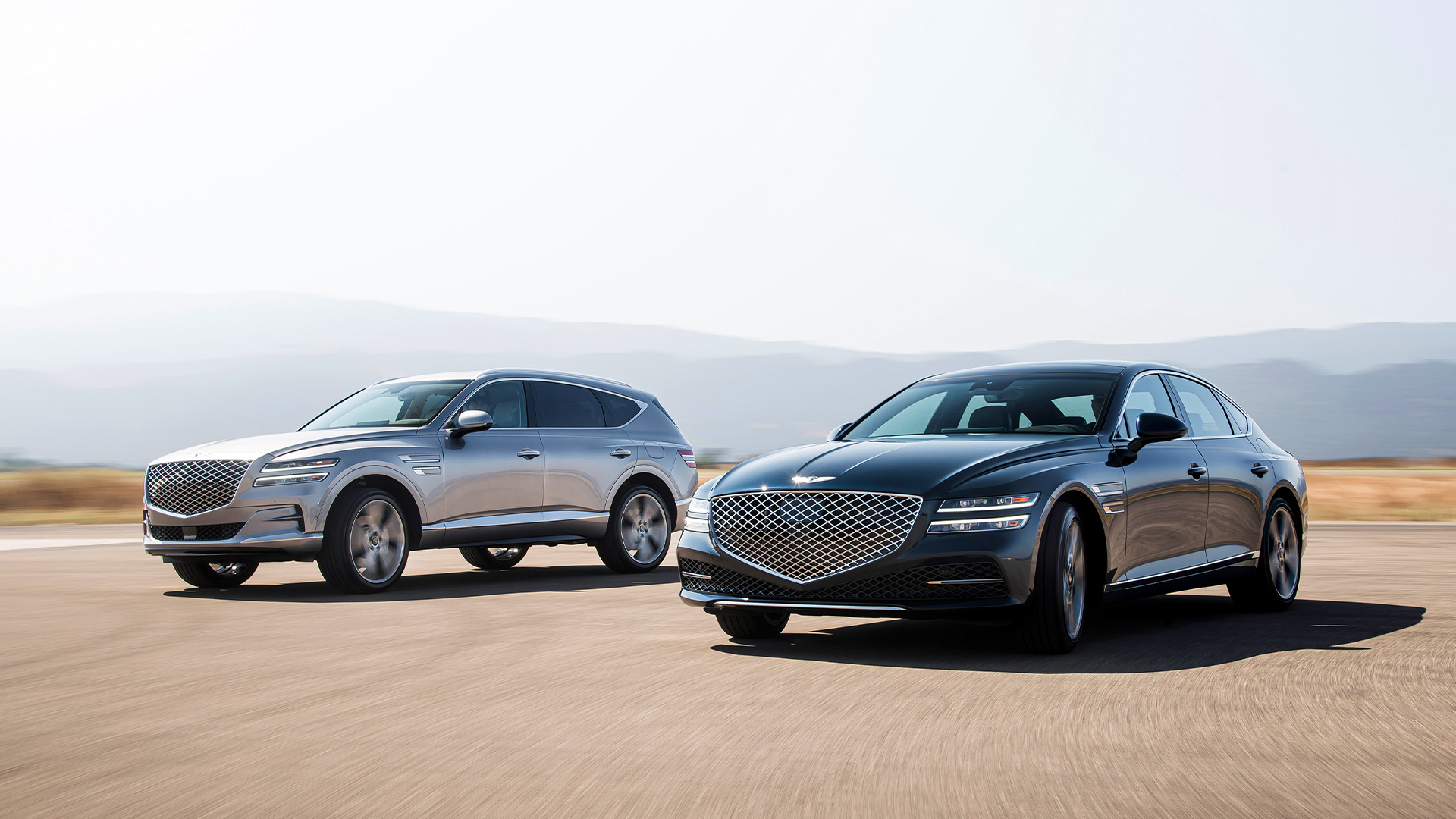
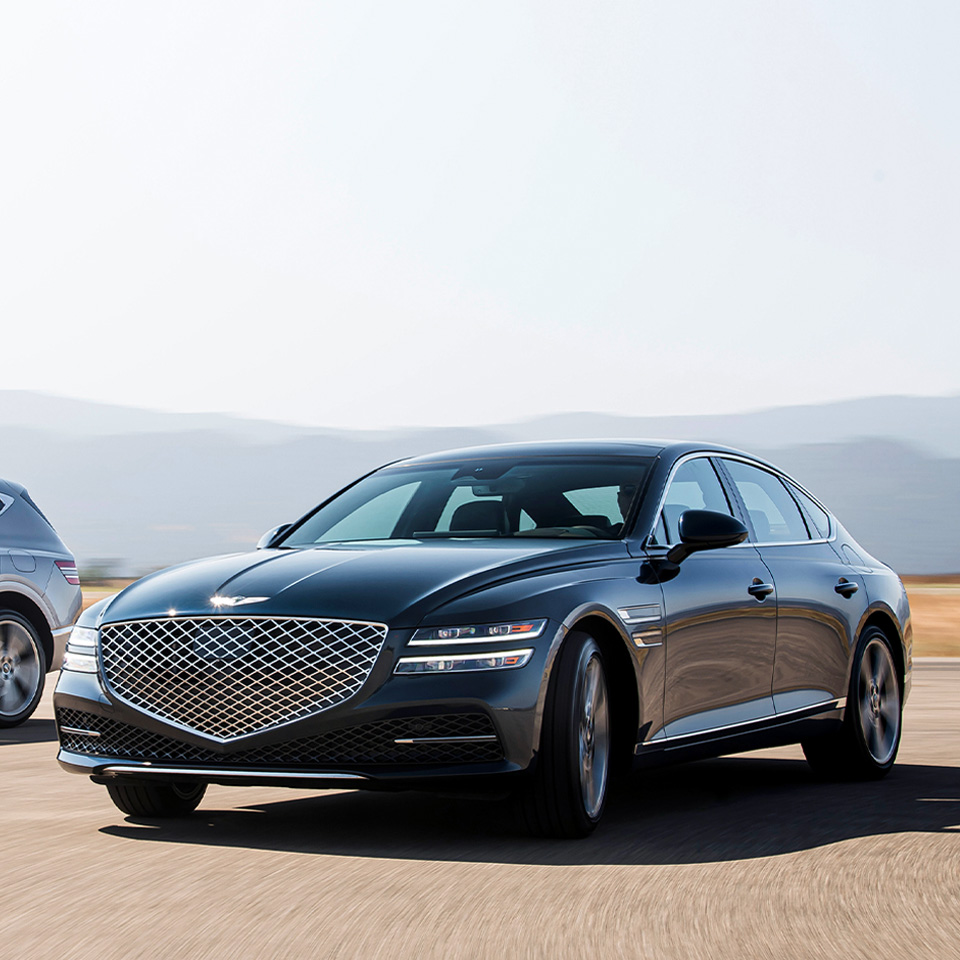


Drivers expect a lot from the glass of their car. In addition to protecting the occupants from wind and pollutants outside and soundproofing, they also want transparent visibility, UV and infrared protection, not to mention their privacy. However, it is difficult to satisfy all factors at the same time, and related regulations must be regarded as there are many conflicting aspects between visible light and other factors that create a transparent view. Automakers and glassmakers have been striving to develop automotive glass that can satisfy passengers' demands without violating the law, and have developed a variety of functional glasses. Here are the details of the development of the automotive glass, the Genesis Solar Glass.
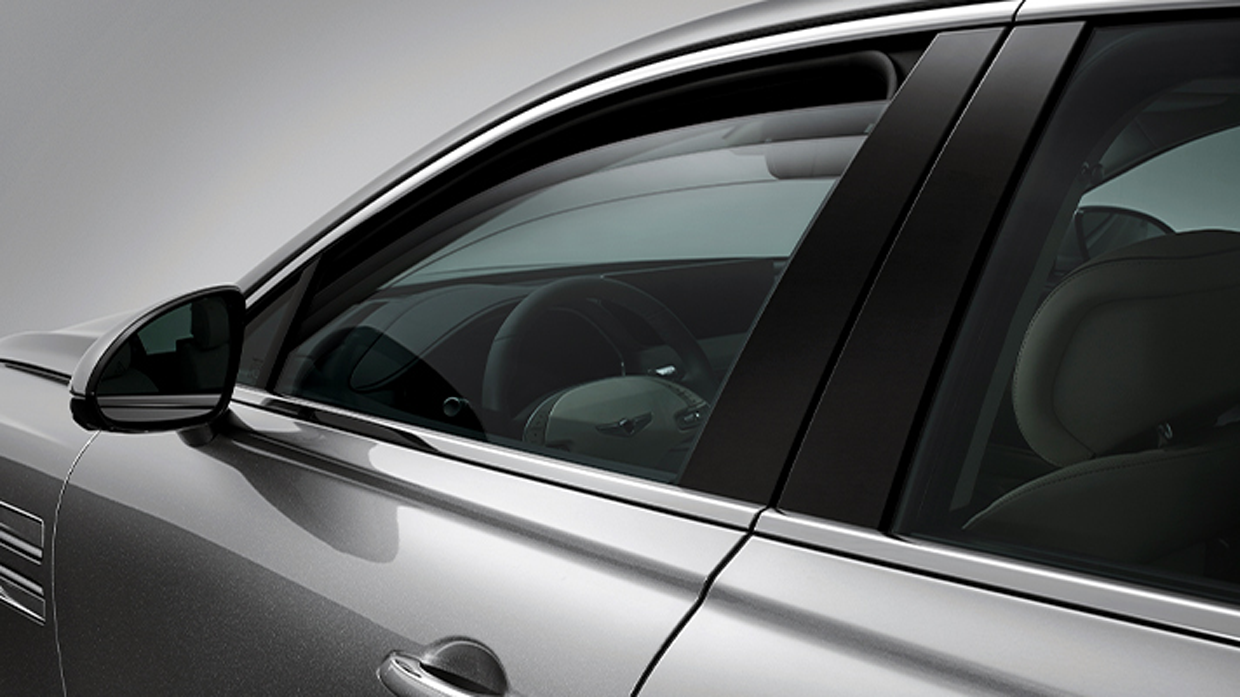
In Korea, it is common to install a tinting film on the glass right after it's out of the factory. Apparently, drivers want to make the cabin more comfortable through tinting that can adjust the light transmittance. There are three main types of light when it comes to tinting: visible light, infrared light, and ultraviolet light. Light is classified into three - visible light (380 to 780 nm), and infrared rays (780 to 1,000 nm) which wavelength is longer than that of visible light, and ultraviolet rays (10 to 380 nm) with the shortest wavelength. Each has different properties.
Infrared light transmits heat energy. The radiant heat of sunlight is mainly transmitted by infrared light and causes the cabin temperature to rise much higher than the outside during the summer. Ultraviolet rays are classified into three types: UV-A (315 to 380 nm), UV-B (280 to 315 nm), and UV-C (10 to 280 nm) depending on the wavelength. Of these, UV-B penetrates the ozone layer of the stratosphere and reaches the surface, which causes us problems, such as skin aging and burns. Lastly, visible light is an indispensable light in our lives, but it can also cause eye irritation when there is too much.
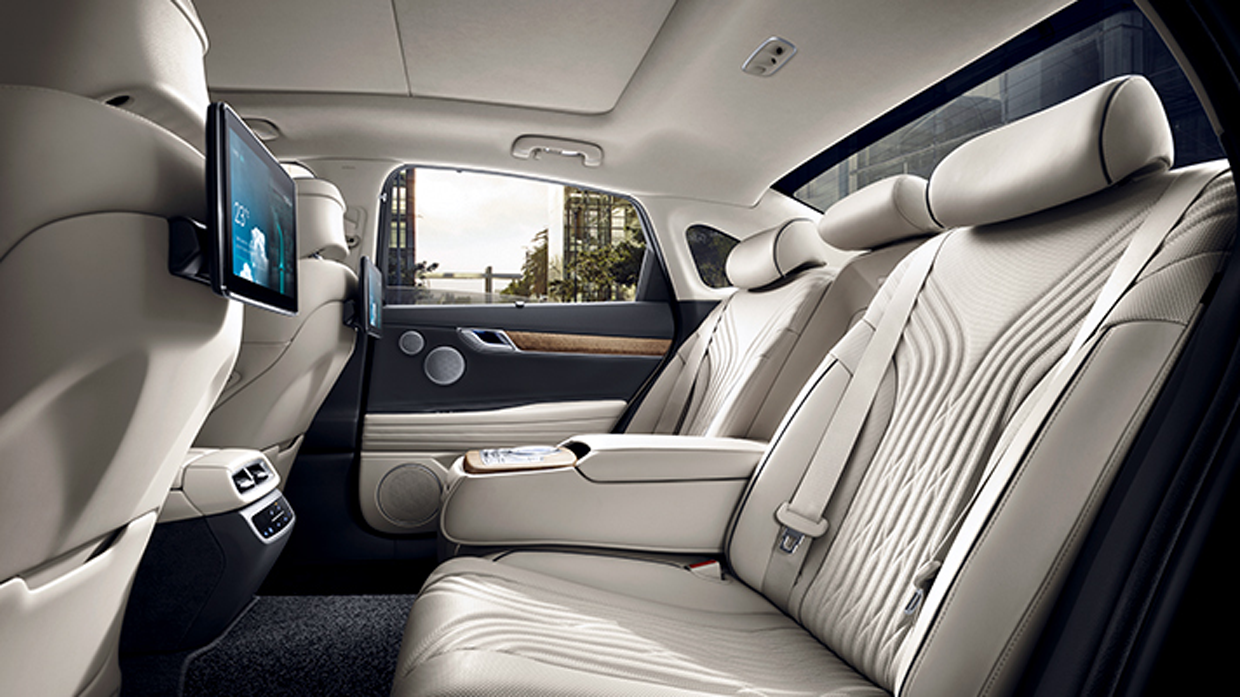
Genesis' solar glass is a functional glass that blocks harmful light. The Genesis is applying solar glass to all its models, which protects occupants from sunlight and increases comfort by minimizing the increase in cabin temperature. Although there is a slight transmittance difference depending on the Genesis model, it blocks 97-98% of UV and 54-72% of infrared light. Generally, all exhibit similar performance to that of a tinted film.
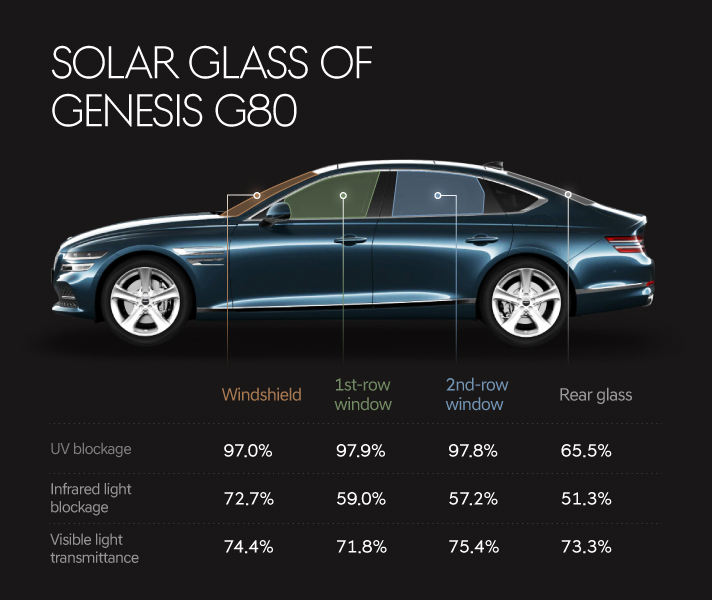
The visible light transmittance in all glass ranges around 70%, to meet the road traffic regulations of each country. In Korea, if the visible light transmittance of the front windshield must exceed 70% and the side of the first row 40%. There are no special regulations from the second row (however, children's vans must have a visible light transmittance of 70% or more for all windows).
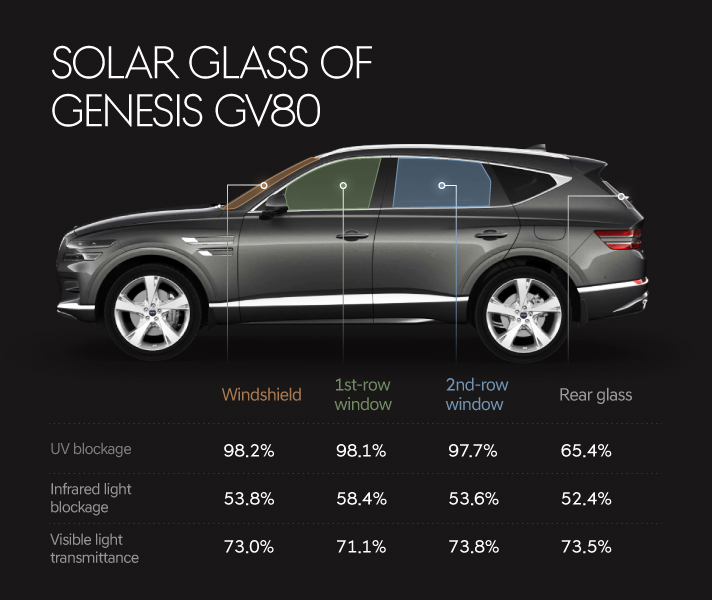
In the case of Genesis G80 (based on double-glazed glass in 1st and 2nd rows), the UV protection rate is 97.0% for windshields, 97.9% for side windows in the first row, 97.8% in the second row, and 65.5% in the rear glass. In addition, the infrared blocking rate is 72.7% for the windshield, 59.0% for the side windows in the first row, 57.2% for the second row, and 51.3% for the rear glass. Nevertheless, the visible light transmittance reaches 74.4% for the windshield, 71.8% for the side windows in the first row, 75.4% for the second row, and 73.3% for the rear glass.
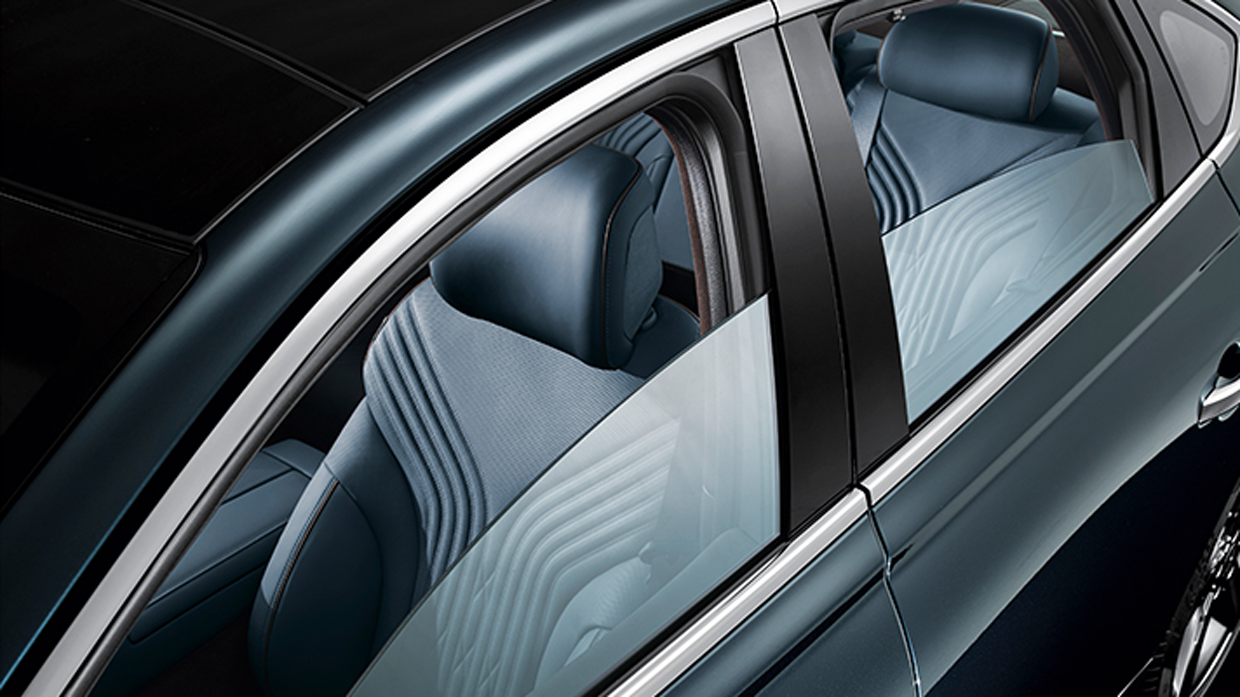
The window glass in Genesis protects eyes and skin from ultraviolet rays and prevents the increase in cabin temperature by appropriately blocking infrared rays, delivering comfort, and ensuring safe driving with a bright vision. In addition, the additional effect of improving fuel efficiency by reducing the operation of the air conditioner can be expected. For reference, Genesis uses double-glazed glass for all models except for the G70, not only for the first row but also for the second row windows. Double-glazed glass is a functional glass that blocks outside noise and improves quietness in the cabin by inserting a special film that absorbs noise and vibration between the glass and the glass. The solar glass composed of double laminated glass (side windows on 1st and 2nd-row) shows the UV and infrared ray blocking rate higher than that of single-layered solar glass.
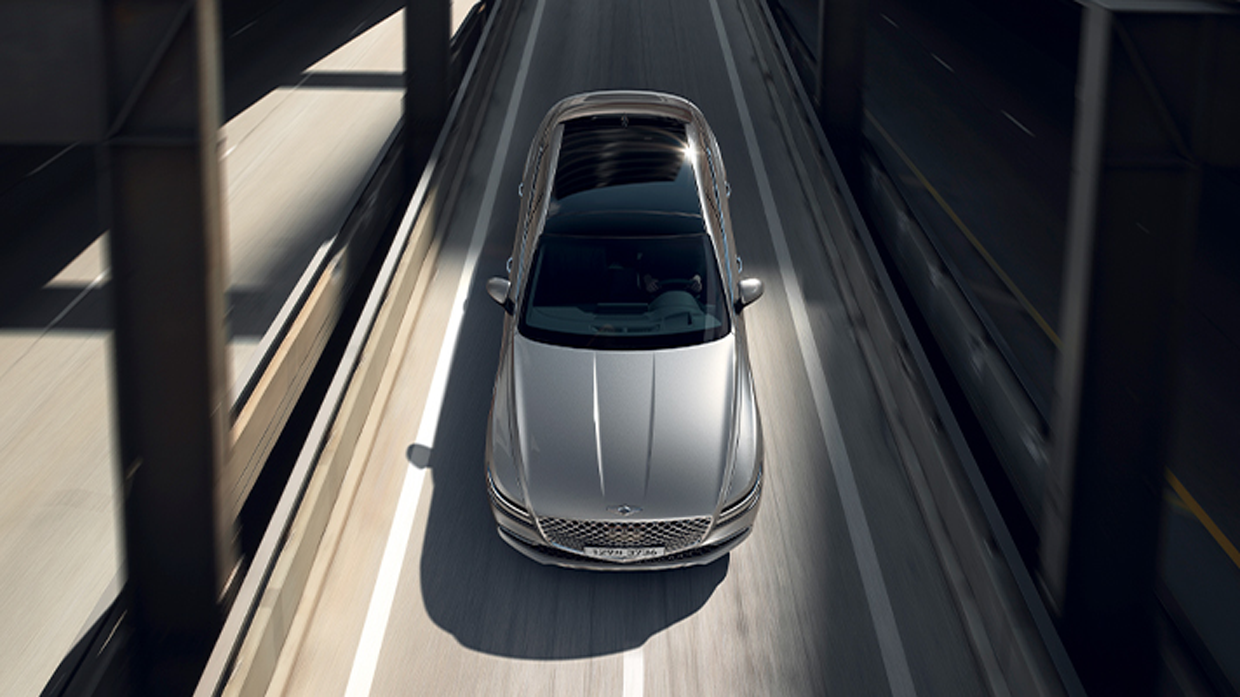
Here's what you should consider when tinting for various conveniences. First of all, it is better not to violate the legal regulations regarding visible light transmittance, for your own safety. In particular, it is recommended to tint 70% for the windshield and 40% for the first row window, but if not possible, it is better to maintain visible light transmittance as much as possible. Heavily tinted glasses that reduce light transmission can impede safe driving. When driving at night or in bad weather, side effects may occur, such as not being able to properly secure the front and rear view, or not being able to detect infants and toddlers left in the vehicle in time.
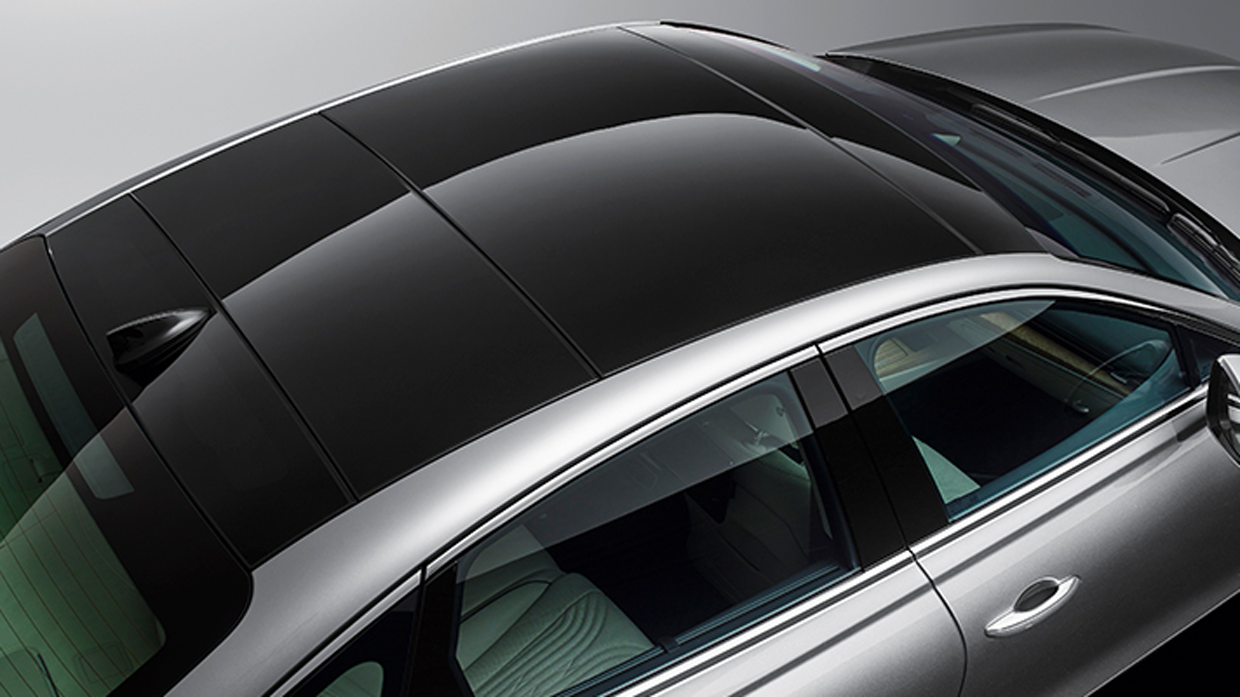
For curved windshield and rear glass, the tinted film must be placed on the outer surface of the glass and then contracted with strong heat, followed by thermoforming to match the curvature with the glass. In this process, the surface of the film does not shrink evenly, so when it is finally bonded to the glass, a slight flicker may occur. Putting a tinted film containing a metal component to increase the infrared ray blocking rate would also be not a good idea. This is because the metallic film reflects light and obstructs the vision of nearby drivers. Through some metallic films, sodium lamp lights installed in tunnels or streetlights may look blurry. In addition, the metal components of the film may interfere with radio waves and infrared communication, causing the malfunction of High-pass Terminals on highways, apartment building access cards, and mobile phone GPS.
Genesis Solar Glass surely offers safe driving with a clear, bright view, and a pleasant cabin environment.
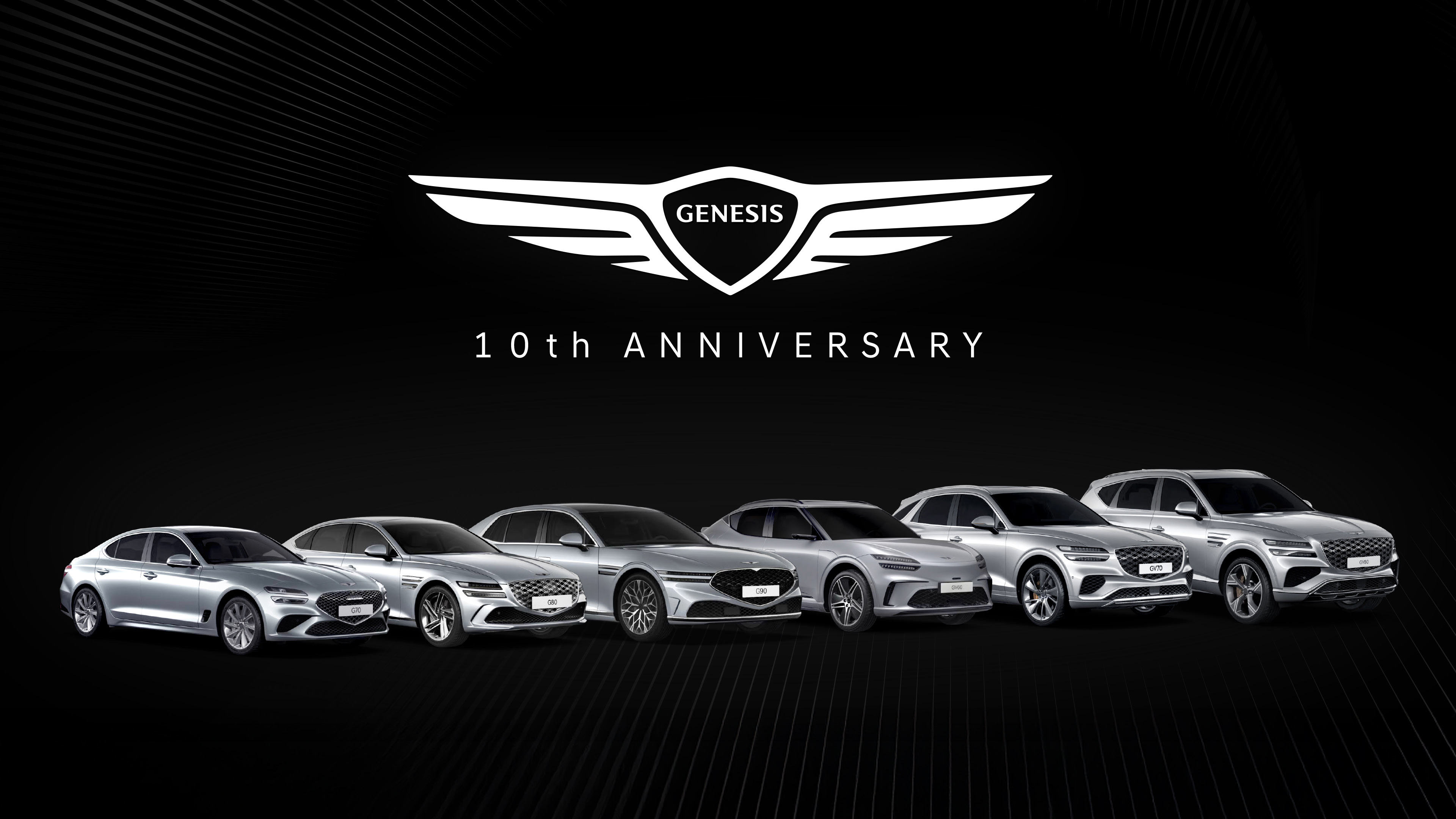
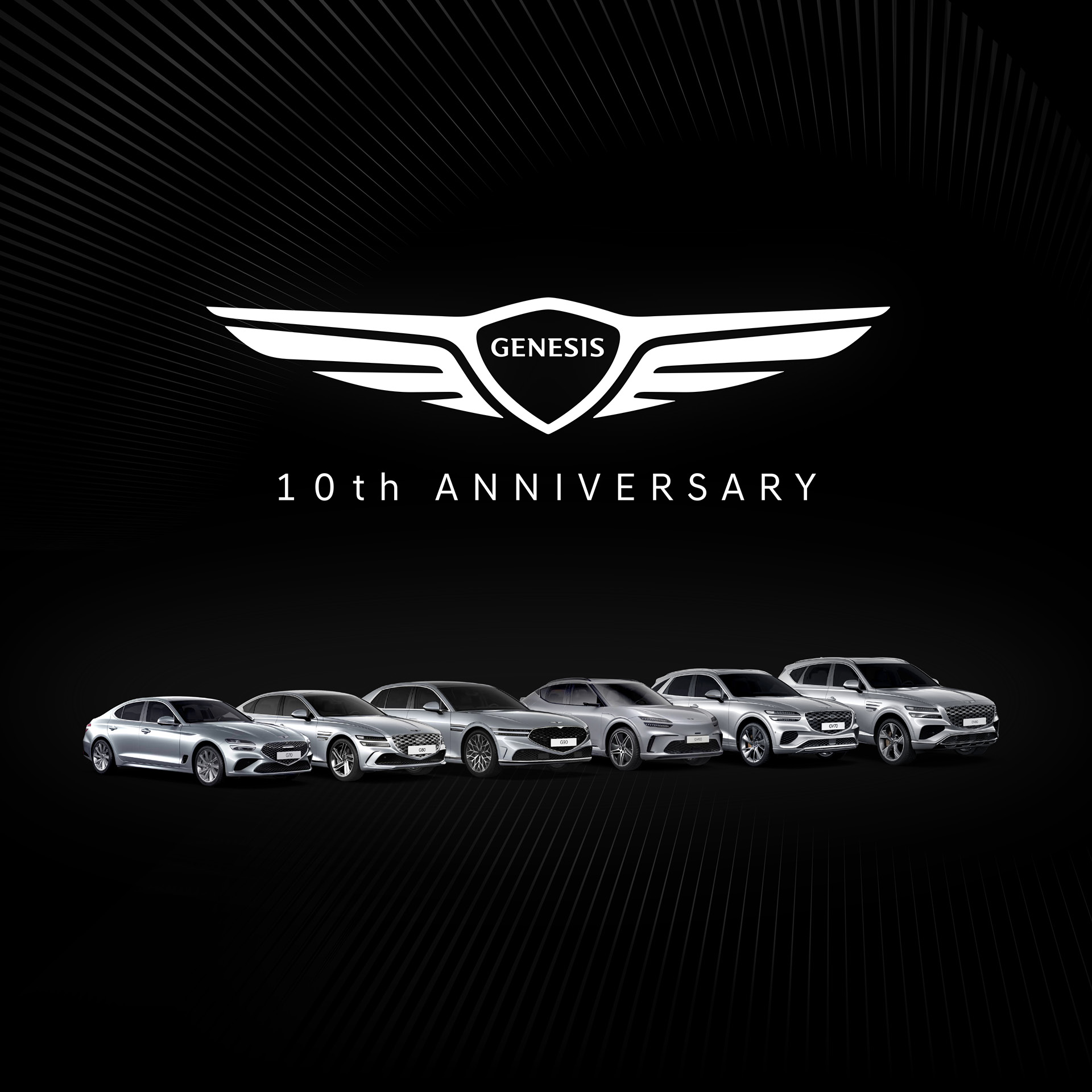
Ten Years of Genesis: A Journey Built Together
2025.11.27 12min read